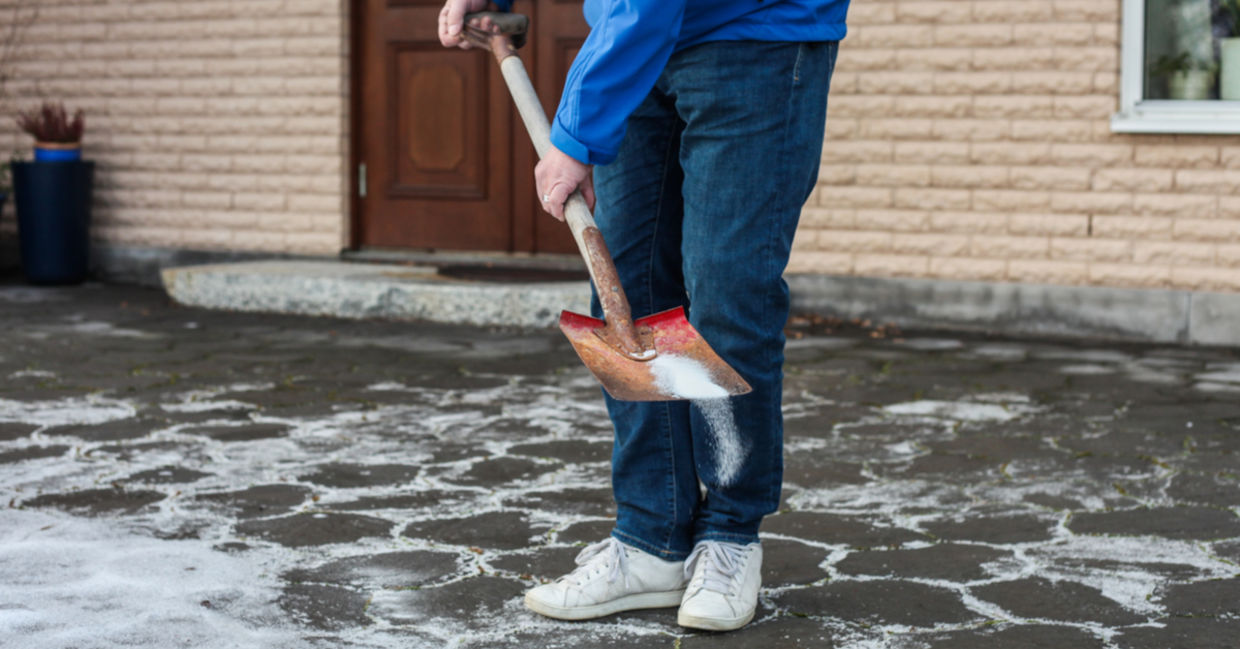
(Sussi Hj / Shutterstock.com)
After a snowfall, snowflakes glisten and the air feels fresh and hushed. However magical it looks, snow and ice must be removed from driveways, roads, sidewalks, and cars.
Be it a thick white coating or a light dusting, out come the shovels, snow brushes, and ice scrapers. When you reach for a de-icer to clean off a slippery sidewalk or your front steps, think safe and clean. There are many ecologically-friendly solutions to help you keep the ice away.
Come winter, many people stock up on salt, bags and bags of road salt. Yet many do not know that when sodium chloride melts, the runoff ends up in streams, rivers, and lakes. It also kills organisms in soil, grass, trees, and any plants nearby, according to Small Footprint Family.
When the chloride enters waterways, it harms aquatic ecosystems and enters drinking water. Chloride burns the paws of dogs and cats, and can be dangerous to children who play in the snow. And, as most northerners know all too well, salt corrodes cars, driveways, and roads.
Over the last 30 years, municipalities have spread road salt at an alarming rate, according to a study on increased chloride concentrations in the northeastern US. Research from the National Academy of Sciences found that by 2050, high chloride concentration in many US lakes will imperil the health of aquatic plants, animals, and microorganisms, as well as drinking water.
It does not take much salt to be destructive; one teaspoon of salt pollutes five gallons of water permanently, according to The Water Main, and once the chloride is inside the drinking supply, it damages pipes and can cause toxic metals to leach into tap water.
It is time to “smart salt.” The good news is that there are many healthy alternatives. Check the EPA Safer Choice Standards list of products which do not contain harmful ingredients. Always research the ingredients as some items may be safe for pets, yet still hurt the environment.
Small Footprint Family suggests choosing pet-safe de-icers made from calcium magnesium acetate, calcium chloride, or potassium chloride. They are non-corrosive and when they run off with melting snow, they will actually fertilize your plants and grass. Another tip for better de-icing is to add a bit of sugar.
Eco-friendly options from Earth 911 include using kitty litter or sandbox sand. These will not melt the ice but will offer traction to reduce the danger of slipping on ice. Other choices include fireplace ash or alfalfa meal, both of which can aid in fertilizing plants. One effective DIY method is using dish soap mixed with rubbing alcohol and diluting it in water.
While still in the cold clutches of winter, now is the time to bid goodbye to road salt. Many municipalities are also becoming more aware of the environmental dangers of de-icing materials. Some cities are consciously spreading less salt on the roads, while others are adding beet sugar, which makes melting more effective. This is clearly a path in the right direction. You too can make a difference starting right on your front doorstep!
YOU MIGHT ALSO LIKE:
10 Ways to Do Good in the Winter
11 Healthy Outdoor Winter Activities for the Entire Family
6 Timeless Ways to Have Fun in the Snow







